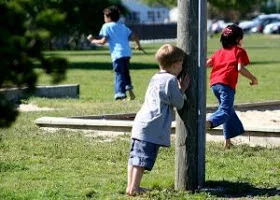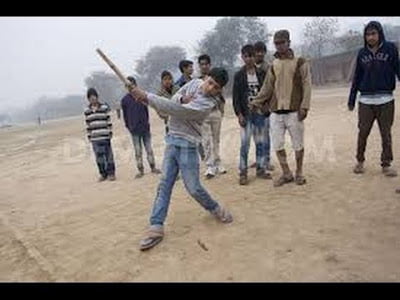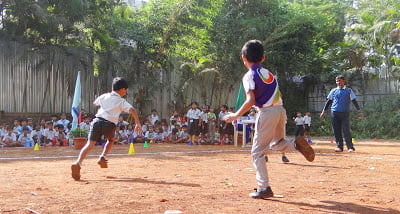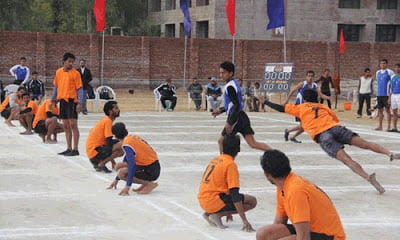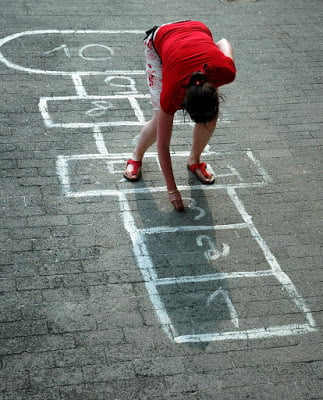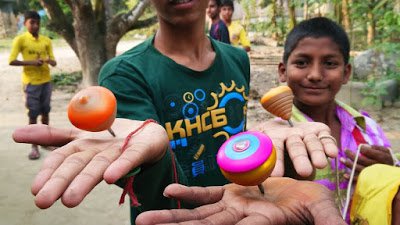Recently updated on October 8th, 2024 at 02:11 am
Disappeared childhood games
Disappeared childhood games, old childhood games, best childhood games, lost childhood games, childhood games 90s, traditional games of India, childhood games images
Today we will review a few traditional Indian childhood games. Those seem to be disappeared nowadays and replaced with kids’ screen addiction.
Laggori/ Seven Stones :
Laggori or 7 stones is a team sport that kids used to play in India. The sport is played only at a recreational level, a well-liked playground game. It is played between two teams, with a minimum of 3 players and a maximum of nine on each team, using seven stones and a rubber ball. both the teams gets nine chances, 3 players taking 3 chances each, to knock down the stones that are stacked vertically, from a distance of about 20ft. If one team is unable to knock down the stones subsequent team gets the prospect to throw.
If the throwing team knocks down the stones, the target of the team is to stack all seven stones back. The defensive team is to strike any player of the throwing team with the ball, below knee level. Players on the defensive team aren’t allowed to run with the ball and need to pass between players to maneuver the ball.
If the offensive team successfully stacks the stones first, the team receives some extent and gets to throw the ball again. If the defensive team is in a position to strike a player first below the knee, there is a change in position.
There are not any fixed rules for the number of players or match duration. Matches are usually played for a hard and fast number of points, about 7 to 10.
Gilli Danda :
Gilli Danda game played by minimum 4 boys aged 8 years and above. This game is played in rural parts of India and is known by various other names.
The players are divided into two teams to play this game – the hitter team and the opponent team. To play this game, one needs an around 1-foot-long stick named Danda, and another small piece of stick with a tapered end around 8 to 10 inches long named Gilli. The danda has to flick the short Gilli into the air and hit again to reach Gilli at a maximum distance. In case the hitter is unable to flick the Gilli, their turn gets over after three chances. The hitter’s score is measured by the space from the place where he hit the Gilli and therefore the place it landed, measured by the danda. The opposing team has got to attempt to catch the Gilli while it’s up in the air. If the opposing team catches the Gilli, then the hitter ends his turn.
Kanche/ Marbles :
Langdi/ One leg Hop :
Disappeared childhood games
Chuppa Chupi/ Hide And Seek :
Everyone has played hide-and-seek games in their childhood. Most parents have played with their kids, since hiding and finding may be a common interest of young children. I’ve heard of all types of variations on this game. Sometimes you count to twenty, sometimes ten, sometimes 100. Sometimes there’s a home base that you simply can run to and tag, becoming “safe,” and sometimes you only wait to be found. the overall idea is that one person is “it,” that person closes his or her eyes and counts to a particular number without looking then he or she tries to seek out the others.
Number of Players: Ideally a minimum of three.
Equipment: None.
Kho Kho :
Hopscotch :
Making a hopscotch grid with some white chalk or any sidewalk white item. Number the squares from one to nine. Pick a rock that’s good for tossing. Small ones can bounce an excessive amount of, and bigger ones are hard to throw.
Start by tossing the rock onto Square 1. skip the rock and hop with one foot or both feet (to follow the hopscotch pattern) all thanks to the top. rotate and are available back, stopping on Square 2. Balancing on one foot, devour the rock in Square 1 and skip Square 1 to the beginning.
Continue this pattern with Square 2. And so on. If you toss your rock and miss the right square, your turn is over. This game is often played with any number of individuals, but just one person can go at a time. If it’s raining or dark or too cold, you’ll get indoor hopscotch mats or foam pieces, or simply find a pattern on the ground to follow, perhaps employing a beanbag rather than a rock.
Number of Players: One at a time.
Equipment: Hopscotch grid, rock, or beanbag.
Lattu :
And many more games. A maximum of us know how to play these games.
Benefits of games or sports -games or sports play a significant role in children’s overall growth. If kids remain physically fit then they can achieve more in their studies. It gives us not only good health but also teaches about life, teamwork, and achieving a common goal, it teaches us discipline. It improves our self-confidence, teaches us how to manage responsibilities, and deals with success and failure in our life. Which are lifelong useful to us.
Before and in the 90s these games were very popular. Because in the 90s very few people knew about internet use and few we’re having a TV in their homes people used to come together for watching tv and gossiping and having fun together. But nowadays even a small baby needs a Mobile while eating. Maximum peoples have a TV, Laptop, Internet, etc at home.
Kids screen addiction:
Due to the attractions of these media. We are simply ignoring healthy options. Addiction to screening has the worst effects. The short-term effects of an online addiction include unfinished tasks, forgotten responsibilities, and weight gain. Long-term effects are seen more in the physical symptoms such as backache, neck pain, carpal tunnel syndrome, and vision problems Too much screen time can impair brain structure and function; it can cause insomnia, mood swings, and even problems at school. Because children’s brains undergo so much change during their formative years.
Maximum parents from us played these games in their childhood and enjoyed them. but Today’s generation of kids mostly don’t know all of these games. So please reintroduces them these games and you can also play and enjoy them.
Thank you for reading Disappeared childhood games 😊
